Scaly leg mites (Knemidocoptes mutans) are microscopic insects that live underneath the scales on a chicken’s lower legs and feet. They dig tiny tunnels underneath the skin, eat the tissue and deposit crud in their wake. The result is thick, scabby, crusty-looking feet and legs. The longer the mites reside under the chicken’s leg scales, the more discomfort and damage they inflict; an unchecked infestation can result in pain, deformities, lameness and loss of toes.
Scaly leg mites spread from bird to bird in a flock, therefore when one bird is infected, all should be treated. As always when external parasites are found in a flock, the coop should be thoroughly cleaned.
TREATMENT OPTIONS
OPTION 1: Soak, Oil, Vaseline
1) soak the feet and legs in warm water
2) dry with a towel, gently exfoliating any dead, loose scales.
3) dip feet and legs in oil, (linseed, mineral, olive, vegetable) which suffocates the mites.
4) wipe off linseed oil and slather affected area with petroleum jelly.
The petroleum jelly should be re-applied several times each week until the affected areas return to normal. It may take several months for mild to moderate cases to resolve.
OPTION 2: Sulfur & Vaseline
An alternate treatment option for scaly leg mites is to mix 2 tablespoons of sulfur powder with ½ cup petroleum jelly- applied daily for a minimum of two weeks.
OPTION 3: Ivermectin
In severe cases of scaly leg mite, oral or injectable forms of Ivermectin may be prescribed by a veterinarian. Per Dr. Julie Gauthier, DVM the dosage is 0.2 mg/kg per bird, repeated in ten days. Gail Damerow indicates an oral dosage of Ivermectin of 5-7 drops for bantam birds, 1/4 cc for larger birds in The Chicken Health Handbook. She also states that “since the withdrawal time is not known, Ivermectin should not be used on birds kept for meat or eggs.” I do not recommend this medication for backyard chickens. It is extremely easy to overdose and kill chickens with Ivermectin.
OPTION 4: Gasoline & A&D ointment (Obviously, do not use this method if the skin is cut, cracked, or lacerated.)
This method is recommended by Dr. Michael Darre, PhD, Poultry Extension Specialist for New England at the University of Connecticut. It is effective and works quickly. This is the method I would use on my chickens if necessary.
Day 1: DIP the affected legs in gasoline (the cheap gas, no need for hi-test). Don’t rub on or brush on, DIP the legs in it. Hold the legs out and allow them to dry. Slather legs with A&D ointment. The A&D softens the scales and promotes healing.
The gas gets up underneath the scales and kills the mites AND suffocates the nits. The nits are the biggest problem when trying to treat scaly leg mites with other treatment options. It can take weeks with other methods and often doesn’t kill all the nits, so the problem never goes away.
Day 2: Slather A&D ointment on the legs only- no gasoline on day 2.
Day 3: Repeat the same treatment as Day 1. Gas dip. Dry. A&D. That completes the course of treatment.
Scaly leg mites on a feral rooster in Key West.
Healthy leg scales.
Healthy leg scales and toes.
Kathy Shea Mormino
Affectionately known internationally as The Chicken Chick®, Kathy Shea Mormino shares a fun-loving, informative style to raising backyard chickens. …Read on


shop my SPONSORS
Scaly leg mites (Knemidocoptes mutans) are microscopic insects that live underneath the scales on a chicken’s lower legs and feet. They dig tiny tunnels underneath the skin, eat the tissue and deposit crud in their wake. The result is thick, scabby, crusty-looking feet and legs. The longer the mites reside under the chicken’s leg scales, the more discomfort and damage they inflict; an unchecked infestation can result in pain, deformities, lameness and loss of toes.
Scaly leg mites spread from bird to bird in a flock, therefore when one bird is infected, all should be treated. As always when external parasites are found in a flock, the coop should be thoroughly cleaned.
TREATMENT OPTIONS
OPTION 1: Soak, Oil, Vaseline
1) soak the feet and legs in warm water
2) dry with a towel, gently exfoliating any dead, loose scales.
3) dip feet and legs in oil, (linseed, mineral, olive, vegetable) which suffocates the mites.
4) wipe off linseed oil and slather affected area with petroleum jelly.
The petroleum jelly should be re-applied several times each week until the affected areas return to normal. It may take several months for mild to moderate cases to resolve.
OPTION 2: Sulfur & Vaseline
An alternate treatment option for scaly leg mites is to mix 2 tablespoons of sulfur powder with ½ cup petroleum jelly- applied daily for a minimum of two weeks.
OPTION 3: Ivermectin
In severe cases of scaly leg mite, oral or injectable forms of Ivermectin may be prescribed by a veterinarian. Per Dr. Julie Gauthier, DVM the dosage is 0.2 mg/kg per bird, repeated in ten days. Gail Damerow indicates an oral dosage of Ivermectin of 5-7 drops for bantam birds, 1/4 cc for larger birds in The Chicken Health Handbook. She also states that “since the withdrawal time is not known, Ivermectin should not be used on birds kept for meat or eggs.” I do not recommend this medication for backyard chickens. It is extremely easy to overdose and kill chickens with Ivermectin.
OPTION 4: Gasoline & A&D ointment (Obviously, do not use this method if the skin is cut, cracked, or lacerated.)
This method is recommended by Dr. Michael Darre, PhD, Poultry Extension Specialist for New England at the University of Connecticut. It is effective and works quickly. This is the method I would use on my chickens if necessary.
Day 1: DIP the affected legs in gasoline (the cheap gas, no need for hi-test). Don’t rub on or brush on, DIP the legs in it. Hold the legs out and allow them to dry. Slather legs with A&D ointment. The A&D softens the scales and promotes healing.
The gas gets up underneath the scales and kills the mites AND suffocates the nits. The nits are the biggest problem when trying to treat scaly leg mites with other treatment options. It can take weeks with other methods and often doesn’t kill all the nits, so the problem never goes away.
Day 2: Slather A&D ointment on the legs only- no gasoline on day 2.
Day 3: Repeat the same treatment as Day 1. Gas dip. Dry. A&D. That completes the course of treatment.
Scaly leg mites on a feral rooster in Key West.
Healthy leg scales.
Healthy leg scales and toes.



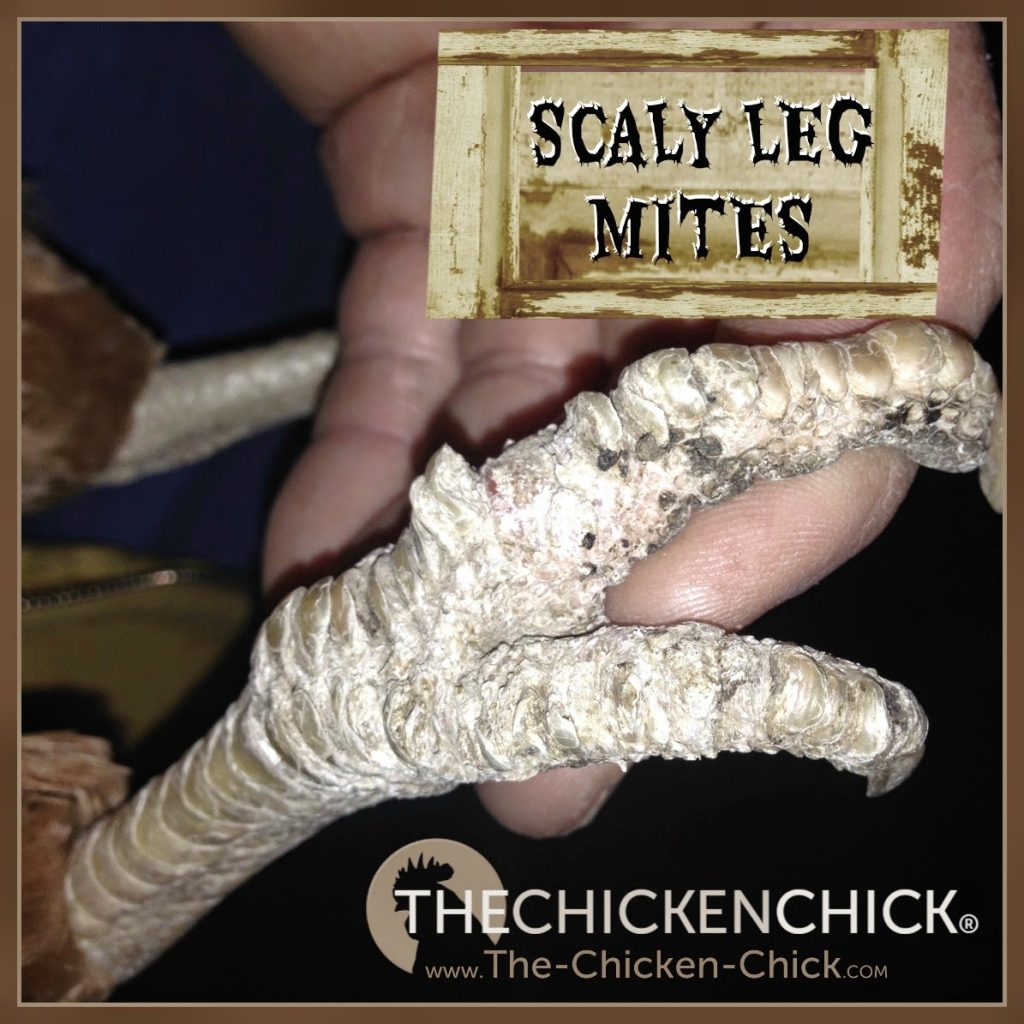
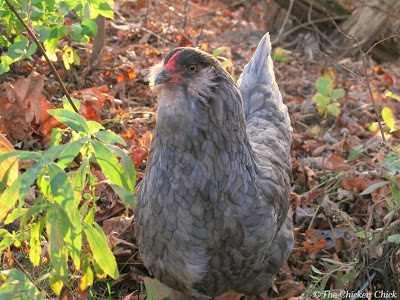
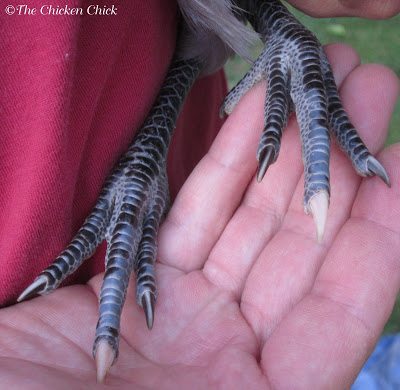
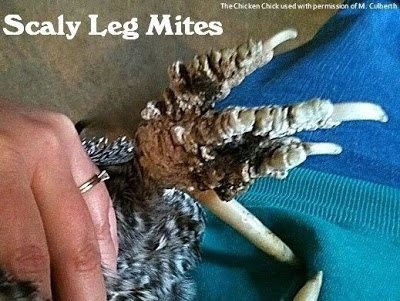
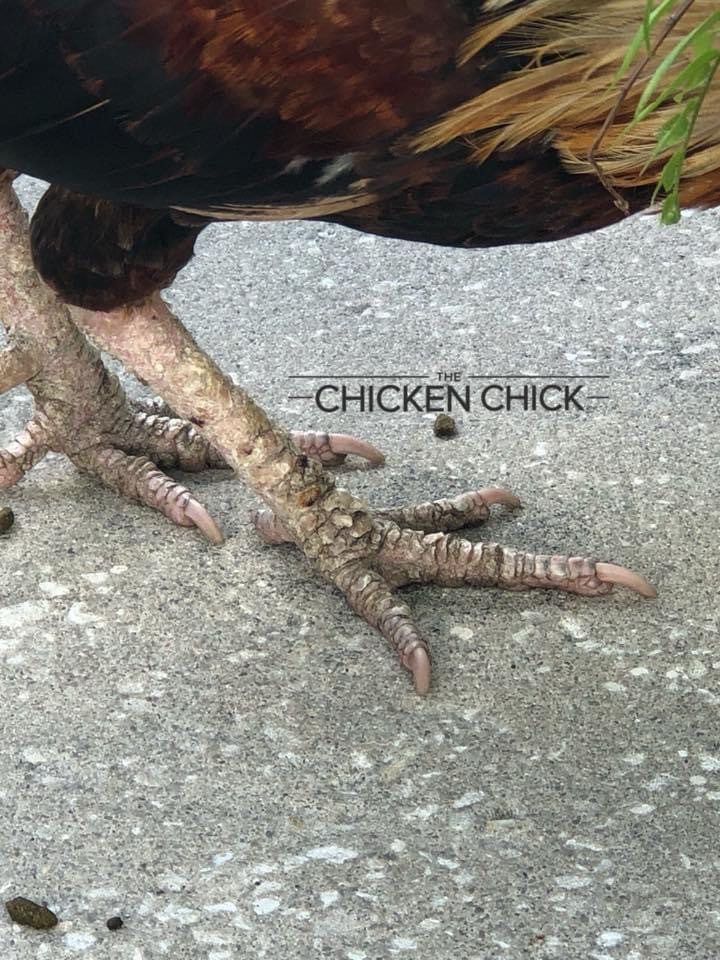
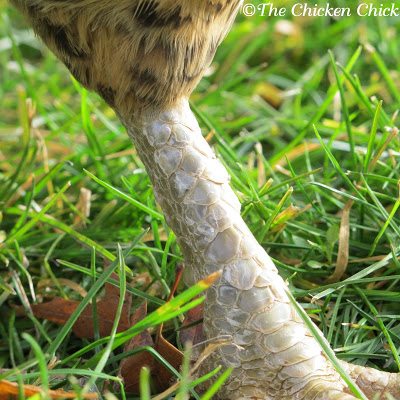
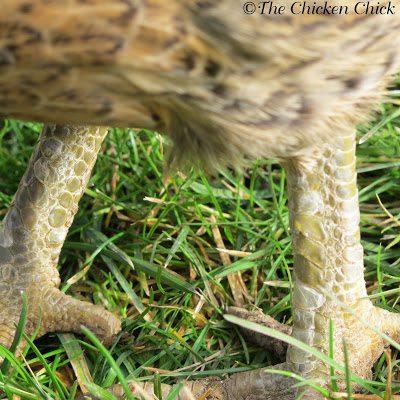


























I know I might not be talking with you all about the scaly leg mites, but I do need some help. I have an araucana chick about 2 months old and she is having issues standing. It is like she is drunk walking around and she only can walk a short distance before she wants to lay down again. She is the smallest out the the four chicks that I have and I don't know if she is getting picked on or stepped on to cause the walking issue or if there is something else wrong. I really need this… Read more »
How does one treat for the scaly leg mite whilst you have a dirt floor? My white Leghorns do not have it but my Isa Browns do. I am pretty isolated here on the Eyre Peninsular where I live but would like to get on top of it for the girls sake. Dirt and oils do not agree with each other. I also have Fox and Cat problems but that I can and do stop.
I introduced a hen a year ago without realizing she had mites or knowing what those mites were. My other hen never got the mites and has healthy legs but my rooster has them. I just did a vegetable oil treatment on the two. But I just introduced a bunch of new chicks to the flock. There's way too many to treat all of them. Is there anything I can do to prevent them from getting the mites?
That's not an old wives' tale, that's a legitimate treatment recommended by vets and poultry experts still. I'm glad you were able to figure it out for him!
I have to input my experience here. I rescued a Serama rooster whose feet were infected and had scaly leg mits so bad that he couldn't stand, drink water, or eat by himself. Needless to say, I thought he would be dead in a couple days at the most. I did a lot of research even going so far as taking him to a vet, $40, for the vet to tell me he had no idea what to do for him. After all that I did something I didn't think would work but I found out it did. I had… Read more »